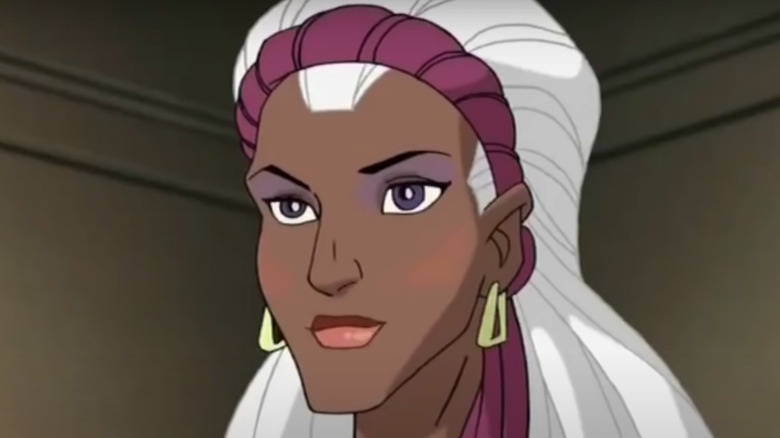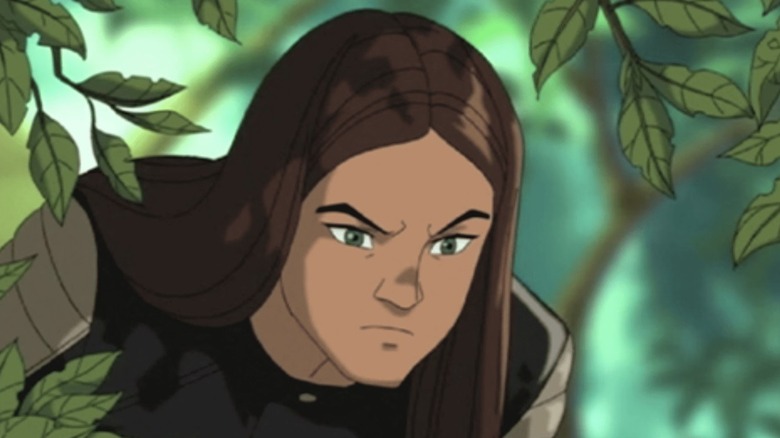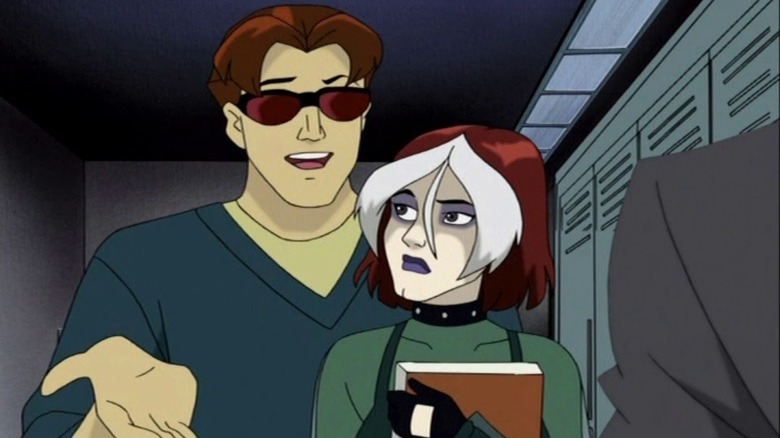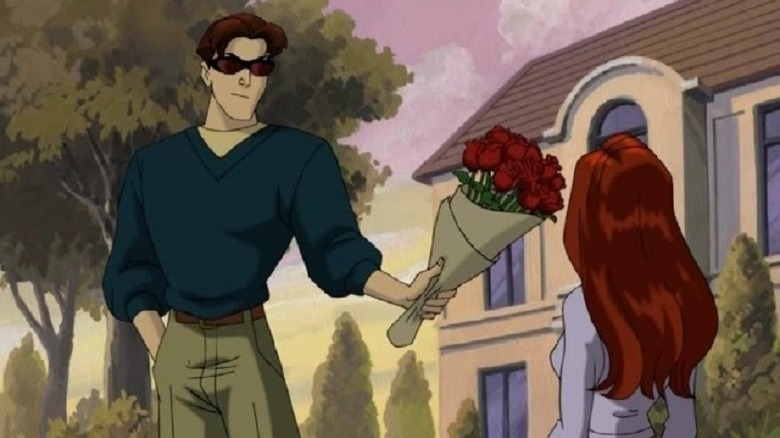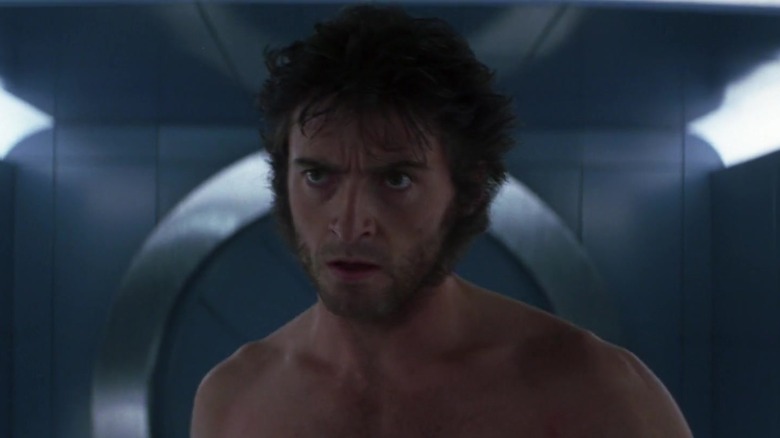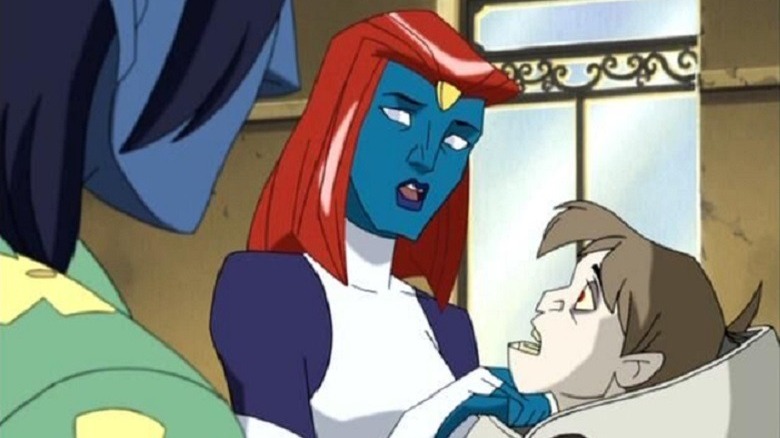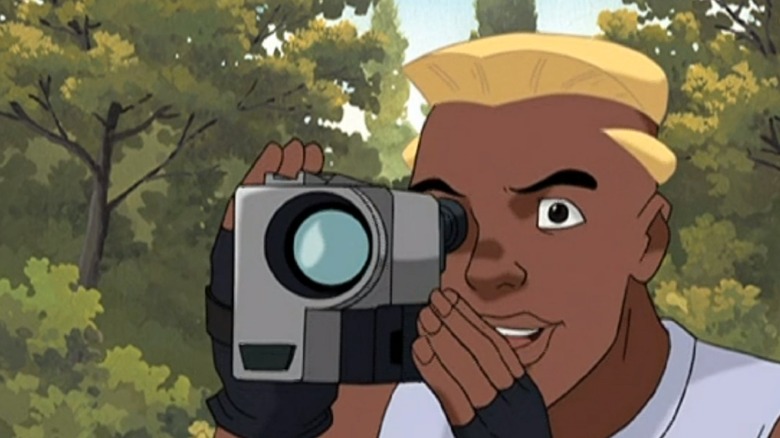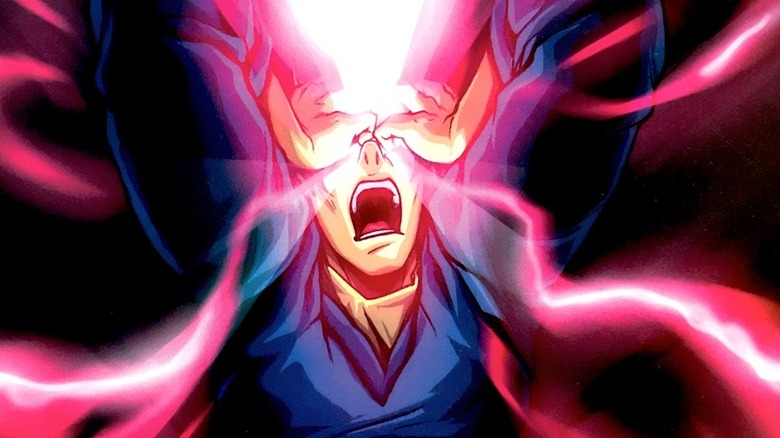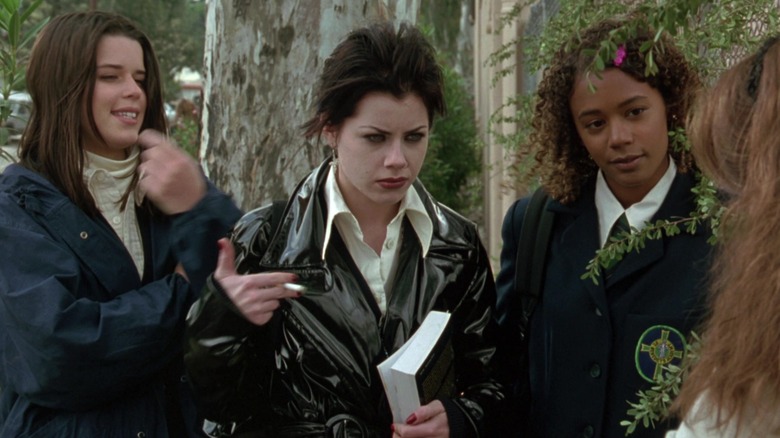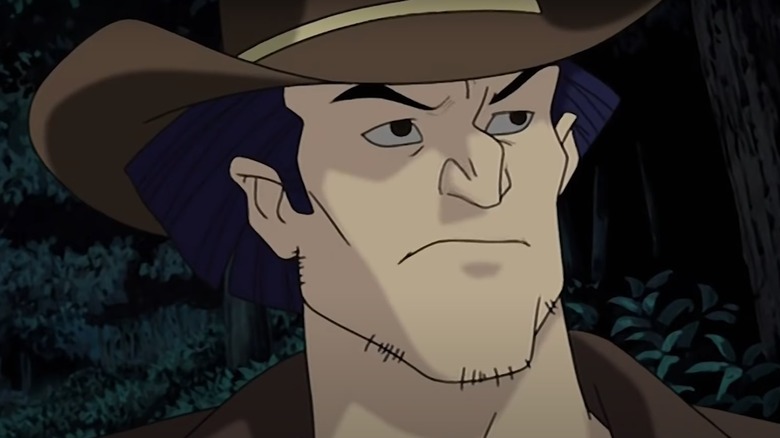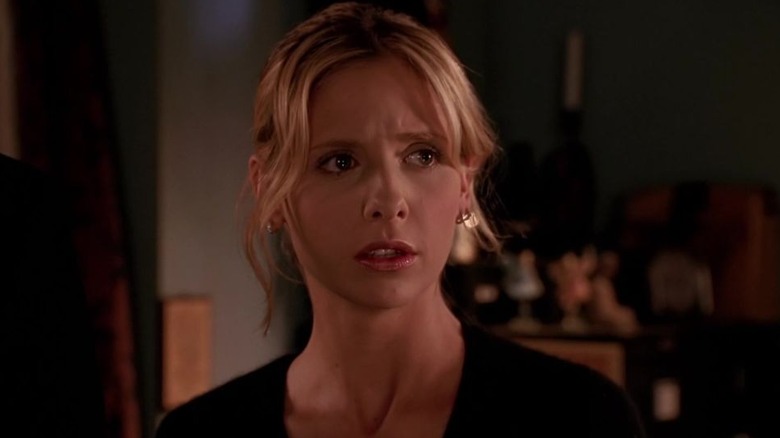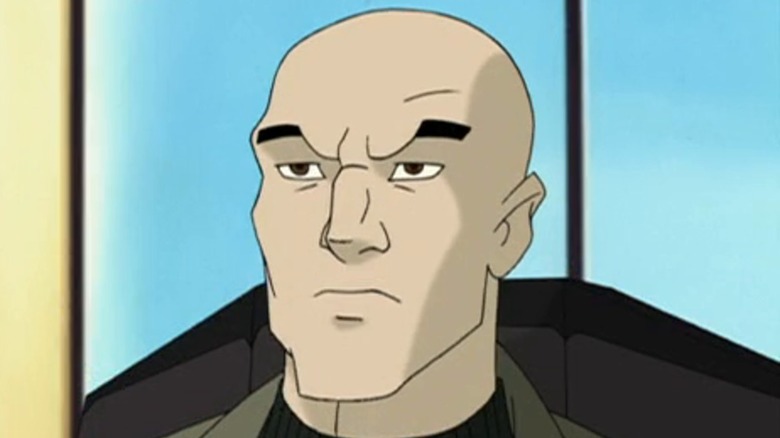The Untold Story Of X-Men: Evolution
When "X-Men: Evolution" debuted in 2000, the odds were firmly stacked against it. For one thing, it had the unenviable task of following "X-Men: The Animated Series," which remains beloved to this day. Secondly, nearly all of its main characters are portrayed as teens. This risked making "X-Men: Evolution" seem like a mutant-themed "Dawson's Creek."
By the end of its 52-episode run, however, the series proved its harshest detractors wrong by constantly producing X-citing stories. Moreover, it introduced new elements and characters that have since made major impacts on X-Men canon. While it might not hold the same lofty place in the almanacs of popular culture as "X-Men: The Animated Series" does, "X-Men: Evolution" is still regarded as one of the best animated shows of its era.
The storied cartoon's journey from conception to realization is an intriguing tale all by itself. "X-Men: Evolution" had to navigate network demands, a changing entertainment marketplace, and the ascent of superhero movies, while still creating a good program that'd appeal to the fans. Let's plug into Cerebro and go back in time to explore the untold story of "X-Men: Evolution."
Introducing X-23
Much like "Batman: The Animated Series" birthed Harley Quinn into the world, "X-Men: Evolution" introduced Laura Kinney, aka X-23. The dual-clawed mutant made her debut in Season 3's "X23," and has since become a pivotal part of the X-Men universe. 2017's "Logan" even brought her into the world of live-action film, as portrayed by Dafne Keen.
But why was X-23 introduced at all, when Wolverine's right there? In fact, that's part of the reason why she was created in the first place. "When we were doing ['Evolution'], again, that's an example to make sure we didn't lose the young audience," Craig Kyle, her creator, told iF Magazine. "And at the time, they were trying to find a way to push Wolverine and get him to connect more to the younger kids. The problem with the structure of ['Evolution'], most of our core heroes were teenagers. Wolverine was one of the old, grizzled guys."
A decision was made to "mirror" Wolverine with X-23: The old brawler and the young girl are as deeply similar as they are different. Did this work? Considering the character is still around to this day and as popular as ever, we think the answer is yes.
Deviating from the comics
"X-Men: The Animated Series" is an unabashedly comics-centric show. It adapts classic ink-and-paper stories like "The Dark Phoenix Saga" and "Days of Future Past," and does them justice in ways that still remain the adaptational standard. "X-Men: Evolution" aims for something different. This series is targeted at a much younger audience, and intentionally deviates from its source material. As producer Boyd Kirkland explained, the creative team "didn't want to just retell watered-down versions of comic book stories where the comic fans would already know the outcome."
In another interview, Kirkland detailed how the network's requests and the show's timeslot also played a major role in its divergence from canon. "Since Kids' WB asked us to make 'X-Men light' keeping their young audience in mind, much of the comics material wouldn't be appropriate for the show, and they would never let us do it," he said. "Again, if this show were in prime-time rather than on Saturday morning, it would have much more of the stuff fans of the comics would like to see." Though comics devotees might not get every brutal moment of their favorite arcs represented on "X-Men: Evolution," no one can deny the show puts its own memorable spin on beloved X-stories.
Slipping romance past the network
The X-Men saga is a giant soap opera. Whether it's the love triangle between Wolverine, Cyclops, and Jean Grey, or Gambit and Rogue's complicated relationship status, romance is always a central theme in these stories.
For "X-Men: Evolution," however, Kids' WB wanted to dial down the lovey-dovey shenanigans to practically nothing. "This is one of those areas where the network really boxed us in," Kirkland told The Dork Review. "We thought this kind of character development was crucial and consistent with the fact that these X-Men were teenagers in high school, but the network felt that 6-10 year old boys (their intended audience) would find such [fare] just icky."
Kirkland added that the team got creative in slipping these elements into the show, despite Kids' WB's protestations. Certain actions, like Lance putting his arm around Kitty in the final episode, weren't in the script, but do happen on screen. Thus, the show alludes to romantic feelings between its characters. It's safe to say that the final result here is creators: 1, suits: 0.
The X-Men movies' influence
As "X-Men: Evolution" arrived hot off the release of the first "X-Men" movie, it's only natural the powers that be wanted some synergy between the two prodctions. After all, what's a better advertisement than a Saturday morning cartoon? Just ask Mattel.
But here's the thing: The confidentiality of the first "X-Men" film was on a whole other level. It was almost as clandestine as KFC's secret recipe, or the process of getting a blue tick on Twitter. How was the "X-Men: Evolution" team supposed to align their cartoon with a movie they knew nothing about?
As Kirkland explained to The Dork Review, "When we were initially developing the series, the first movie was still being shot, so we couldn't really refer to it. Only Avi Arad knew what it was going to be, and he didn't share much of that with us (everything was top-secret)." The cartoon team wasn't completely on its own, however. "[Arad] did guide us a little in such things as the style of Wolverine's hair, the look of Sabretooth and the design of Xavier's chair," Kirkland recalled. "Beyond that, we were pretty much on our own."
By the time Season 2 rolled around, the talented minds behind "X-Men: Evolution" had seen "X-Men," and were able to bring in influences from it. Still, none of them are likely to forget the tricky balancing act Season 1 imposed upon them. Hollywood truly does work in mysterious ways.
Subtle LGBTQ+ representation
Change was on the horizon of the entertainment industry at the turn of the millennium. Television shows and films started to embrace diversity, and made more of an active effort to represent LGBTQ+ people. While openly LGBTQ+ characters were still years away from appearing on animated shows aimed at children, "X-Men: Evolution" did manage to move the medium in a more modern and inclusive direction.
In a post on his website, animator Steven E. Gordon revealed how the talent behind the show addressed Mystique's sexuality. "As far as who was [gay] or not, we [subtly] tried to indicate that Mystique was living at one time with Destiny and raising a child (Rogue)," he explained. "We also tried to indicate that Risty was [gay] (Mystique in disguise) and she was flirting with Rogue." Gordon added that some members of the creative team thought Nightcrawler could be gay as well, "but that was never addressed in any way on the show."
Spyke was almost named Armadillo
Like X-23, Evan Daniels, better known as Spyke, was created for "X-Men: Evolution." As executive producer Rick Ungar and Boyd Kirkland explained, Spyke was born from a desire to come up with an entirely new X-Man, and an interest in diversifying Professor Xavier's team. As Kirkland recalled, "We just [had] a real tough time coming up with a character of color that existed in the first 10 years of the comic." Instead of aging down a character from later in the franchise's history, they decided to create a new one.
Spyke went through a few iterations before becoming the character fans now recognize. As revealed by early artwork and concept sketches, the character's original code name was Armadillo, and for a while, he sported cornrows. "We were originally pushing for kind of these tied down braids," Steve E. Gordon explained, when discussing how the creators settled on Spyke's final look, "but we didn't go that way. We went for more of a Dennis Rodman type of cut since he's into basketball and skateboarding." While aesthetics are important, fans everywhere are thankful someone thought better of naming him Armadillo.
The comic book series flopped
As with most superhero shows of its era, an accompanying comic book series was released alongside "X-Men: Evolution." Written by Devin Grayson and Jay Faerber and illustrated by J.J. Kirby and Udon Studios, the 2002 series consists of original tales set in the show's continuity. The first few issues dive into Wolverine, Storm, Cyclops, and Jean Grey's origin stories, while later installments introduce comic-exclusive elements, like the Morlocks.
Sadly, the "X-Men: Evolution" comic series was canceled after its ninth issue (via Newsarama). This was an especially cruel blow, as issue 10 was slated to feature the gene-slicing gentleman himself, Mister Sinister. The series remained out of print for years, before finally receiving a reprint for the show's 20th anniversary in 2020. Considering "Batman: The Animated Series" received a comic book revival in the form of 2020's "Batman: The Adventures Continue," perhaps something similar could happen with "X-Men: Evolution"?
It features an homage to ... The Craft?!
It's no secret that "X-Men: Evolution" wears its influences proudly on its sleeve. The series is certainly a product of its time, what with its goth-inspired Rogue and multiple characters who dress like extras from a Limp Bizkit music video. In the years since its release, fans have continued to find Easter eggs referring to other pop culture nuggets of the era. Some of them are more obvious than others, which means certain nods have managed to stay secret for years.
One of the fandom's more recent discoveries is a blatant homage to '90s cult classic "The Craft." The tribute occurs in Season 2's "Walk on the Wild Side," when the X-Men girls walk down the school hallway. The moment is an almost identical recreation of a scene from the film. To make it even more on-the-nose, the episode's theme is all about the girls coming to terms with their powers and refusing to adhere to social norms. Sound familiar?
The Wolverine problem
The X-Men without Wolverine is like pizza without cheese. However, "X-Men: Evolution" encountered a unique problem when it came to the beloved Canadian: Wolverine is one of the most brutal heroes around. The man wakes up and chooses violence every single day. Those claws of his simply aren't for show — though he has been known to use them to roast sausages, on occasion.
Considering "X-Men: Evolution" is aimed at children, the Ol' Canucklehead's aggression needed to be toned down from "Rated R" to "All Ages." This presented a serious challenge to the creative team. Kirkland told Marvel Animation Age that he felt the team's "hands were always tied with Wolverine because of the violent aspect of his power and nature, and because he was an adult." This limitation had a silver lining, though: It spurred the creation of X-23, which provided "a clever way to involve [Wolverine] in the storytelling." And hey, at least the fans get to see Logan rocking his iconic orange and brown threads from the comics, right?
Buffy the Vampire Slayer meets the X-Men
Not many shows can claim to have made the kind of seismic cultural impact "Buffy the Vampire Slayer" did. It defined a generation of viewers and changed the face of television forever. As it turns out, one of the key figures working on "X-Men: Evolution" was a huge fan of the series as well.
In a fan Q&A, Kirkland discussed his love of "Buffy." "I plead guilty to being a big Buffy fan, and of using the Faith/Buffy dance as reference for the Rogue/Kitty dance [in Season 1's 'Spykecam']," he said. "Good animation, especially on TV schedules [and] low budgets, is hard to come by, so for especially difficult scenes like that one, it is very helpful to use live action as reference." Fans can't complain — the relevant dance sequence does indeed look very good.
Kirkland also spoke of other similarities between "Buffy the Vampire Slayer" and "X-Men: Evolution," such as the main characters' ages, the presence of superpowers, and the fact that Buffy is "constantly saving people at her high school while trying to avoid being discovered." Also, it isn't too hard to see that Giles and Professor X are basically the same person — except for the hairstyle, of course.
The title that almost was
"X-Men: Evolution" is a perfectly named series. Not only is the title literally accurate, as the cast is young and has to evolve, it's also figuratively apt. This was, at the time, a totally new version of the X-Men that hadn't been seen before in any medium. It was, in that sense, the next step in the franchise's evolution.
However, "X-Men: Evolution" wasn't the first name that came to mind for the show's creators. As Steven E. Gordon revealed to The Dork Review, the show's original working title was "Children of the Atom," a common X-Men moniker in the comics. The phrase had gained further popularity at the time, as "X-Men: Children of the Atom" is also the title of a 1999 miniseries and a 1994 video game.
The comic book series is notably similar to "X-Men: Evolution." "X-Men: Children of the Atom," written by Joe Casey and illustrated by Steve Rude, Esad Ribić, and Paul Smith, is a retelling of the team's origin story that focuses on its teenage heroes coming to terms with their powers and lives. Did the show's creators find inspiration in this premise? Perhaps. It's enough to make one wonder how a title like "X-Men: Children of the Atom" might have affected the cartoon's fortunes.
